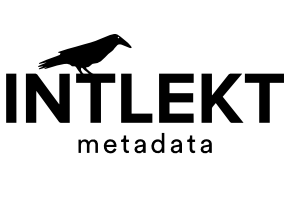The digital turn in humanities and social sciences

This post reports on my presentation at the conference Humanistica in Montréal, the 20th of May 2022.
Humanities scholars build databases for analysis, mining, and sharing. Indexing online documents is crucial for authors, publishers and readers. Today, there is a multiplicity of semantic metadata systems and ontologies to classify data and documents. These systems (often inherited from the printing era) vary widely according to languages, disciplines, traditions and theories.
In this context, the IEML metalanguage proposes a programmable modeling and indexing tool, capable of ensuring semantic interoperability, without standardizing the different points of view.
In IEML, each concept has a unique linguistic representation. Expressed in IEML rather than in natural language, concepts become more explicit and transparent. Moreover, IEML is a univocal language, without lexical or syntactic ambiguities. Concepts from different ontologies are composed of words of the same dictionary according to a regular grammar.
It is therefore possible to collaboratively exchange models and sub-models between researchers speaking different languages and coming from different disciplines. In short, IEML solves the problem of semantic interoperability.
A platform for collaborative design and maintenance of semantic graphs is in sight (ontologies, indexing systems, labels for machine learning, etc.).
A new semantic tool
IEML is not a format – of data or metadata – but a language that has :
• a compact dictionary with 3000 words (accessible in English and French)
• a fully regular grammar
• all integrated into an editor-parser
IEML has the same semantic qualities and strengths as a natural language. Thus, IEML can translate all natural languages and can serve as a hub between natural languages. Its semantics is computable because it is a function of its syntax (which is regular). Intended for the construction of semantic graphs, its sentences can take two forms: nodes or links. IEML has instructions for programming semantic graphs such as: hypertexts, ontologies and data models.
The words
Using the grammar and the words of the dictionary, the IEML editor allows to recursively generate as many concepts as needed. IEML words are built regularly from 6 primitive symbols.

The six primitives, like the other letters of IEML are words and denote concepts when used alone. But when used inside another word, they represent places in symmetry systems: symmetry 1 for E, symmetry 2 for U/A, symmetry 3 for S/B/T. For more details on IEML primitives, see: https://intlekt.io/semantic-primitives/
The generative operation for the words has 3 roles:
substance ☓ attribute ☓ mode
By combining this generative operation (☓) with an additive (+) operation, it becomes possible to create various word paradigms, that are always organized in tables. Below, the 25 lowercase letters are united in a paradigmatic table that multiplies U+A+S+B+T in substance by U+A+S+B+T in attribute, with an always empty mode.

In the image above, the colors indicate four systems of symmetries (4, 6, 6, 9) whose letters occupy specific positions. Learn more about the 25 lowercase letters: https://intlekt.io/25-basic-categories/
IEML words paradigms (and sentences paradigms as well) are systems of semantic symmetries represented by systems of syntactic symmetries. For example, the paradigm below organizes spatial relationships. The first two rows organize spatial relationships along the vertical (first row) and horizontal (second row) axes. The three rows at the bottom of the table organize entry and exit, lateralization, and pathways.

Let us remember that the IEML dictionary is above all a toolbox for building new categories by means of phrases.
The sentences
The nine roles of the sentence – in green in the example – along with *auxiliaries, ~inflections and & junctions allow for the expression of narratives and causal explanations.


In IEML, semantic relations are not created one by one « by hand » but are programmed. The instruction for creating semantic relations below is broken down into two parts. In the example below, the part that starts with @link states the link sentence with the two variables $A and $B: « Word A means the opposite of word B ». The numbers 0, 1 and 8 are shortcuts for the sentence roles: root, initiator and manner. The part that begins with @function states the domain (in this case the spatial relation paradigm above) that is concerned with relation creation. It states the necessary conditions for the creation of relations in terms of syntactic addresses and content. The function for creating relations uses only two types of « equations » connected by « AND » and « OR »:
syntax address A == syntax address B
syntax address A == content c

Note that the function shown above creates 30 semantic relations at once!
Indexing, proper names, reference and self-reference.
IEML explicitly handles proper names and references that are not general categories. The example below gives three examples: a name, a number and a hyperlink. To learn more about the treatment of proper names in IEML see: https://intlekt.io/proper-names-in-ieml/

IEML can also refer to its own expressions: links, definitions, comments, etc. The example below is taken from the spatial relations paradigm and the relation « word A means the opposite of word B » discussed above.

Several ontologies are currently under development. Do not hesitate to contact us if you are interested in IEML!

